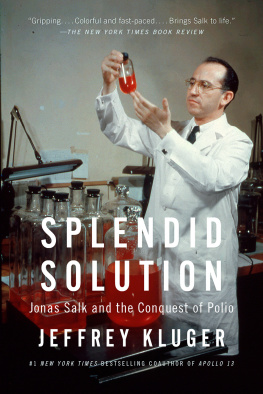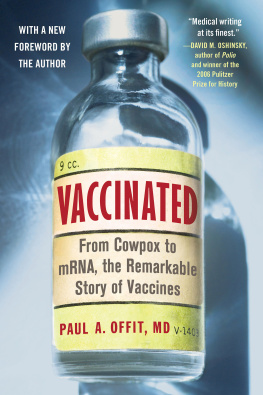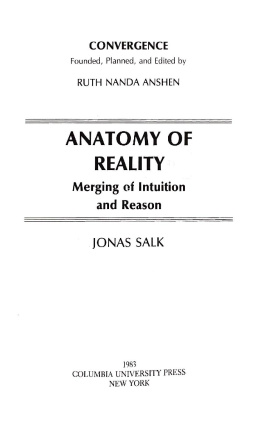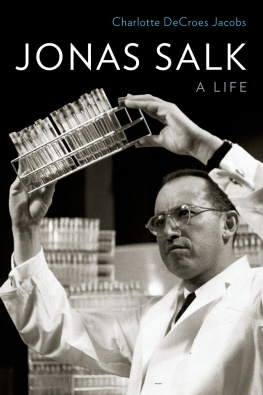POLIO
POLIO
An American Story
DAVID M. OSHINSKY

ALSO BY DAVID M. OSHINSKY
Worse Than Slavery:
Parchman Farm and the Ordeal of Jim Crow Justice
A Conspiracy So Immense:
The World of Joe McCarthy
Senator Joseph McCarthy and
the American Labor Movement
The Case of the Nazi Professor
(co-author)
American Passage: A History of the United States
(co-author)
The Oxford Companion to United States History
(co-editor)

Oxford University Press, Inc., publishes works that further
Oxford Universitys objective of excellence in research,
scholarship, and education.
Oxford New York
Auckland Cape Town Dar es Salaam Hong Kong Karachi
Kuala Lumpur Madrid Melbourne Mexico City Nairobi
New Delhi Shanghai Taipei Toronto
With offices in
Argentina Austria Brazil Chile Czech Republic France Greece
Guatemala Hungary Italy Japan Poland Portugal Singapore
South Korea Switzerland Thailand Turkey Ukraine Vietnam
Copyright 2005 by David M. Oshinsky
Published by Oxford University Press, Inc.
198 Madison Avenue, New York, NY 10016
www.oup.com
Oxford is a registered trademark of Oxford University Press
All rights reserved. No part of this publication may be reproduced, stored in a retrieval system, or transmitted, in any form or by any means, electronic, mechanical, photocopying, recording, or otherwise, without the prior permission of Oxford University Press.
Library of Congress Cataloging-in-Publication Data
Oshinsky, David M., 1944
Polio: an American story / David M. Oshinsky.
p. cm.
Includes bibliographical references and index.
ISBN-13: 978-0-19-515294-4
ISBN-10: 0-19-515294-8
1. PoliomyelitisUnited StatesHistory20th century. I. Title.
RC181.U5O83 2005
614.5490973dc22
2004025249
9 8 7 6 5 4 3 2 1
Printed in the United States of America
on acid-free paper
For Jane
Her love, her compassion, her sense of family; her extraordinary courage in
the face of adversityall make her the indispensable one.
Contents
POLIO
Introduction
SAN ANGELO in 1949 was pure West Texas, a county seat of 50,000 people between Abilene and the Mexican border at Del Rio, set in a vast landscape of farm fields, oil wells, and cattle ranches trimmed in barbed wire. Like so many other towns of that era, it had sprung to life during World War II, nearly doubling its population with the expansion of a military air base at Goodfellow Field. As thousands of people arrived, and thousands more returned home from the war, San Angelo found itself connected to the larger world in vital, sometimes dangerous, new ways.
The late 1940s were flush years in the United States. A booming economy encouraged Americans to marry, start a family, buy a house, consume. In San Angelo as elsewhere, the pain and sacrifice of the Great Depression and World War II had been replaced by a more optimistic vision of material comfort and economic success. The town continued to prosper and expand. In 1949, the San Angelo Standard-Times predicted a golden future, linking prosperity, among other things, to the regions warm climate and health-giving reputation.
On May 20, a small blot on this bright picture appeared. The newspaper reported that a local child had come down with poliomyelitis. San Angelo had endured minor outbreaks before. The disease touched down in the late spring, like hailstorms and tornadoes, but had never really spread. There was mild concern, nothing more.
Within days, concern had turned to alarm. Parents began arriving at Shannon Memorial Hospital with feverish, aching youngsters in their arms. Twenty-five polio cases were confirmed by the medical
Dr. R. E. Elvins, the city health officer, told people what they already knew: polio had topped epidemic proportions. Employing the usual guidelines for a disease with no known cause or prevention or cure, he recommended that San Angelos children avoid crowds, wash their hands regularly, get plenty of rest, and stay out of pools and swimming holes. You cant wave a wand and clear up polio, he said. Its largely up to individual families.
Elvins had one more suggestion. Since poliovirus was often found in human feces and on the legs of houseflies, he called for a heavy spraying of DDT, singling out the open pit toilets on the Latin American and Negro side of town. Others were less subtle, blaming the epidemic on the wetbacks who migrated north each year to tend San Angelos livestock and crops.
In early June, with the temperature nudging 100 and the polio count at sixty-one, the city council voted to close all indoor meeting places for a week. Theater marquees went dark in San Angelo Thursday night, said the Standard-Times. There were no youngsters splashing in the municipal swimming pool during the day. No San Angelo churches will meet Sunday. The lockdown was soon complete. Bars and bowling alleys shut their doors, professional wrestling was canceled at the high school, popular country bands like Snuffy Smith and the Snuff Dippers steered clear of town.
So, too, did everyone else. Tourist traffic disappeared. Rumors spread about catching polio from an uncovered sneeze, from handling money, or from talking on the telephone. We got to the point no one could comprehend, a local pediatrician noted, when people would not even shake hands.
For the most part, local residents did what other Americans had been taught to do in a polio epidemic: make filth the enemy and cleanliness the goal. Measures that would have seemed preposterous a few weeks before, such as monitoring the health of migrant workers and banning the sale of livestock within city limits, gained quick public support. Its bad, said one state health official of San Angelos predicament. All I
San Angelo bought two fogging machines to bathe the city in DDT. Twice each day, flatbed trucks would rumble through the streets, spraying the chemical from large hoses while children danced innocently in the mist that trailed behind. As a goodwill gesture, the local Sherwin-Williams store provided DDT at no cost, urging customers to drench the walls and furniture in their homes. (Bring your own container! it said.) One hardware store advertised its own brand of insecticideQueen City Kill Five times more powerful than DDT. Another promised an even stronger concoction, called Super-Activated Bug Juice.
Fear of polio became the perfect selling tool. The Hi-Tone Cleaners vowed to disinfect its equipment before each pressing and wash. Local Sani-Flush ads urged a closer scrubbing of the family toilet when polios on the rampage. Clorox warned, Its the dirt you dont see that does the damage. Companies hawked polio insurance, while chiropractors promised immunity from the disease. Keep your childs body correctly adjusted, said Dr. Roy Crowder, and there is no likelihood of polio.
But nothing seemed to work. By mid-June more than half of San Angelos 160 hospital beds were filled by polio patients, almost all of them children under fifteen. A small staff of doctors and nurses worked exhausting double shifts. Volunteers overcame their fear of contagion to comfort patients, pack their limbs with hot compresses, and watch over those in iron lungs. The ultimate nightmare was a thunderstorm that could knock out the respirators lining the makeshift isolation wards. As one doctor recalled: An alarm in the hospital was sounded with the appearance of dark clouds in the sky. Pumping the hand lever [of an iron lung] fatigued even the most rugged of men and women after a short time, but others stood by to relieve any tired pumper. No patient died because of the failure of a respirator during a storm.
Next page







